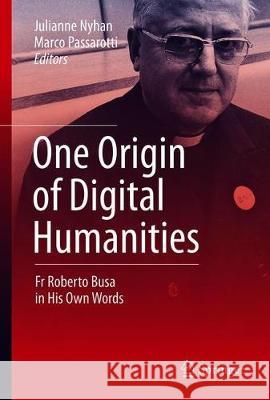One Origin of Digital Humanities: Fr Roberto Busa in His Own Words » książka
topmenu
One Origin of Digital Humanities: Fr Roberto Busa in His Own Words
ISBN-13: 9783030183110 / Angielski / Twarda / 2019 / 212 str.
Kategorie:
Kategorie BISAC:
Wydawca:
Springer
Język:
Angielski
ISBN-13:
9783030183110
Rok wydania:
2019
Wydanie:
2019
Ilość stron:
212
Waga:
0.54 kg
Wymiary:
23.39 x 15.6 x 1.6
Oprawa:
Twarda
Wolumenów:
01
Dodatkowe informacje:
Bibliografia
Wydanie ilustrowane
Wydanie ilustrowane











